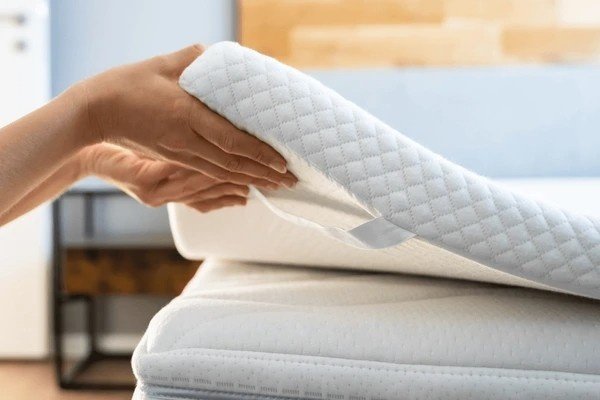When winter hits, the air inside our homes tends to dry out, making it harder for us to breathe easily and feel comfortable. That’s when an air humidifier can make a real difference. I’ve found these devices incredibly helpful, not just for alleviating dry skin or sinus issues, but for improving the overall air quality in my home. However, choosing the best air humidifier can feel overwhelming given the numerous options available. Over the years, I’ve learned to evaluate these devices based on specific factors, and I want to share my experience and insights to help guide your purchase decision.
Table of Contents
Why You Need an Air Humidifier
Before diving into the details of how to choose an air humidifier, let me first explain why you might need one. Humidifiers add moisture to the air, which can counteract the dryness caused by indoor heating or cold weather. Some of the key benefits of using a humidifier include:
- Relieving Dry Skin: Dry air can strip moisture from your skin, causing it to crack or feel rough. A humidifier helps keep your skin hydrated.
- Easing Respiratory Issues: Dry air can irritate the respiratory system, leading to issues like dry throat, coughing, or congestion. Humidifiers keep the airways moist and reduce discomfort.
- Improving Sleep Quality: Dry air can lead to snoring or sinus problems, affecting your sleep quality. A humidifier can alleviate these problems.
- Protecting Furniture and Plants: Wooden furniture, musical instruments, and plants all benefit from proper humidity levels. Without adequate moisture in the air, wood can crack, and plants may struggle to thrive.
Types of Humidifiers
There are different types of humidifiers available, each with its unique features. Here’s a breakdown of the most common types:
1. Evaporative Humidifiers
These are the most common type and work by using a fan to blow air through a moistened filter, causing the water to evaporate and raise the humidity in the room. They tend to be self-regulating because as the humidity level rises, the rate of evaporation slows down.
2. Ultrasonic Humidifiers
Ultrasonic humidifiers use high-frequency sound vibrations to create a fine mist of water. These are quieter than evaporative humidifiers and generally more energy-efficient. However, they do require regular cleaning to prevent the growth of mold or bacteria in the tank.
3. Warm Mist Humidifiers
Also known as steam vaporizers, warm mist humidifiers boil water to produce steam, which is then cooled slightly before being released as a warm mist. These are ideal for colder climates but consume more energy due to the heating element.
4. Cool Mist Humidifiers
These devices release a cool mist into the air, which is beneficial during warmer months. They can either use ultrasonic or evaporative technology to create the mist.
5. Central Humidifiers
Central humidifiers are installed directly into your home’s heating and air conditioning system. They can humidify an entire house, making them ideal for people who want to maintain a constant humidity level across multiple rooms.
Key Factors to Consider When Buying an Air Humidifier
Now that you know the different types of humidifiers, let’s talk about what you should look for when buying one. I’ve narrowed it down to a few key factors:
1. Room Size
Humidifiers come in different sizes and are designed for specific room sizes. A small humidifier might work well for a bedroom, but if you’re trying to humidify a larger living area or open-plan space, you’ll need a bigger unit. Always check the square footage rating of the humidifier to ensure it’s suitable for your room size.
2. Humidity Output
The amount of moisture the humidifier adds to the air is known as its humidity output. This is usually measured in gallons per day (GPD) or liters per day (LPD). If you’re dealing with particularly dry conditions, opt for a humidifier with a higher output.
3. Water Tank Capacity
The larger the water tank, the longer the humidifier can run without needing a refill. If you don’t want to refill the tank multiple times a day, look for a model with a larger capacity. However, keep in mind that larger tanks can also make the unit bulkier and less portable.
4. Noise Level
Humidifiers can be noisy, especially models with fans. If you plan to use your humidifier while sleeping or in a quiet room, I recommend looking for a quieter model, such as an ultrasonic humidifier. Check the decibel rating if the noise level is a concern for you.
5. Ease of Cleaning
A humidifier can become a breeding ground for bacteria, mold, and mildew if not cleaned regularly. Some models come with features that make cleaning easier, such as dishwasher-safe components or antimicrobial coatings. Pay attention to how easy it is to clean the humidifier and how often it requires maintenance.
6. Additional Features
Some humidifiers come with additional features that can enhance your experience, such as:
- Humidistats: These allow you to set a specific humidity level, and the humidifier will automatically adjust to maintain it.
- Air Purifiers: Some humidifiers combine their function with an air purifier to remove dust and allergens from the air.
- Essential Oil Diffusers: If you enjoy aromatherapy, look for a model that has an essential oil diffuser built-in.
- Automatic Shut-Off: This safety feature turns off the humidifier when the water tank is empty, preventing damage.
Comparison Table of Top Humidifiers
Here’s a comparison table of some popular air humidifiers based on key features:
| Model | Type | Room Size | Humidity Output | Water Tank Capacity | Noise Level | Additional Features |
|---|---|---|---|---|---|---|
| Levoit LV600HH | Warm & Cool Mist | 750 sq ft | 500ml/hour | 6L | Quiet | Humidistat, Essential Oil Diffuser |
| Honeywell HCM350B | Evaporative | 500 sq ft | 300ml/hour | 1.25L | Moderate | Antimicrobial Protection |
| Vicks V745A | Warm Mist | 300 sq ft | 200ml/hour | 1.5L | Quiet | Medicine Cup, Auto Shut-off |
| Pure Enrichment MistAire | Cool Mist | 250 sq ft | 150ml/hour | 1.5L | Quiet | LED Night Light, Automatic Shut-off |
| Dyson AM10 | Ultraviolet & Cool Mist | 500 sq ft | 450ml/hour | 3L | Very Quiet | Air Purifier, UV Sterilization |
Evaluating Humidifiers by Room Type
Not all rooms in your house are created equal when it comes to humidity needs. Here’s a quick guide based on the room you plan to use the humidifier in.
1. Bedrooms
For bedrooms, I recommend a quieter model with a moderate tank capacity, as you won’t want a loud machine disrupting your sleep. Ultrasonic humidifiers or cool mist humidifiers work well in these spaces.
2. Living Rooms
Living rooms generally have more space, so you’ll need a larger humidifier with a higher humidity output. Evaporative and warm mist models can work well here, depending on the climate.
3. Nurseries
For babies, a cool mist humidifier is often the safest option. Some models also feature a nightlight or a medicine cup for vaporizing soothing scents like eucalyptus or lavender, which can be calming.
4. Offices
In an office, especially if it’s small, a portable ultrasonic or cool mist humidifier is usually the best choice. Look for a model that doesn’t produce too much noise and has a long enough runtime to avoid frequent refills.
Common Mistakes to Avoid
While shopping for a humidifier, it’s easy to get caught up in the excitement of all the features and functions. However, there are a few common mistakes I see people make when purchasing these devices:
- Choosing a Model Too Small for the Room: If the humidifier is too small, it won’t be effective in raising the humidity in the entire room.
- Not Considering Maintenance: Some humidifiers can be difficult to clean, leading to the growth of mold and bacteria.
- Ignoring Noise Levels: It’s important to check the noise level before purchasing, especially if you intend to use it in a bedroom or office.
- Skipping the Warranty: Many humidifiers come with warranties, so always check this before making a purchase to ensure you’re covered in case of defects.
Conclusion
Choosing the best air humidifier depends on your specific needs. Whether you’re looking for a simple cool mist option for your bedroom or a more sophisticated model that can purify and humidify the air in your living room, there’s an option for every home. In my experience, it’s worth taking the time to understand the type of humidifier, its features, and how it will fit into your daily routine. I hope this guide has helped you navigate the world of humidifiers and find the one that’s perfect for your space and lifestyle. Happy shopping!





